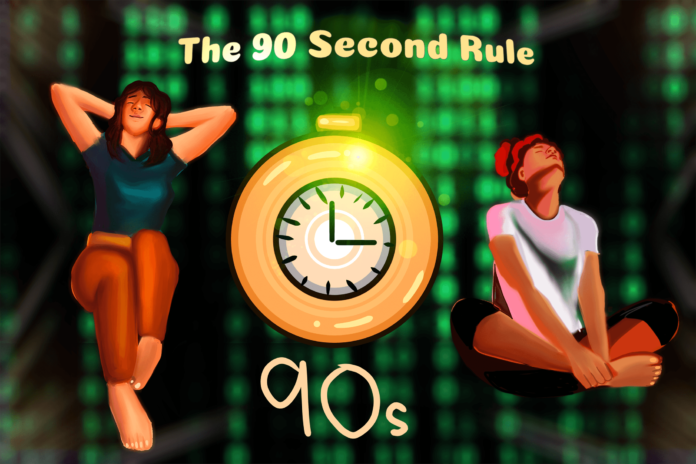How do you deal with uncomfortable emotions?
When emotions like sadness, anger, guilt or any other uncomfortable emotions arise, many of us are quick to distract ourselves with shopping, overthinking, scrolling or any other kind of distraction. Oftentimes, when we are faced with an uncomfortable emotion, we label it as “bad” or “unwanted” and are quick to mask how we feel in an attempt to soothe ourselves.
While many of us have an unconscious habit of running from our emotions, healing is done by feeling. Dealing with these emotions, even just for 90 seconds, gives us a chance to target and eliminate them for good. It is a practice that can be implemented anywhere, at any time.
Masking and pushing away the uncomfortable emotions will result in the emotion resurfacing in different ways. These are called defence mechanisms. Defence mechanisms are usually unconsciously used as a shield from unwanted experiences. The problem with these strategies is that they are oftentimes unhealthy, destructive and prevent a person from experiencing life fully.
Defence mechanisms can be grouped into primitive (such as acting out, avoidance, projection and denial) and higher-level defence mechanisms (such as intellectualization, sexualization and rationalization).
By constantly avoiding uncomfortable emotions, prolonged defence mechanism sustenance can lead to a number of problems such as increased anxiety, increased depression, decreased academic success, and difficulty forming or maintaining relationships.
When was the last time you sat with your emotions without distracting yourself from them, judging them or turning them into a story?
According to Jill Bolte Taylor, an American neuroanatomist, our emotions take 90 seconds to process. However, to process them we must remain present with the emotion—allowing it to run its course by observing it, instead of engaging it or pushing it away.
To understand the science behind this method, Taylor explains that there are only three things occurring inside of us at any given moment. We are always either thinking a thought, feeling an emotion, and having a physiological response to what we are thinking and feeling.
For example, imagine you have a thought that stimulates anger. As a result, noradrenaline gets released into your bloodstream, spreads throughout your system and then flushes out. It takes 90 seconds from the moment the thought happens until the moment your blood is clean.
Now, many people can feel stuck in a certain emotion for longer than 90 seconds. This is caused by replaying the thought which consequently repeats the emotional loop over and over again, never allowing your blood to thoroughly flush out whatever you are feeling.
To put this rule into practice, next time you become aware of an emotion arising within yourself, before labeling it as “bad” or “unwanted,” consider sitting with it and letting it run its course. Sitting with it means you are not creating stories in your mind about it, you are not running or hiding from it, and you are not trying to distract, minimize or amplify it. Instead, simply try allowing yourself and your feelings to exist. Set a 90-second timer on your phone and see how you feel afterwards.
In my experience, this practice has helped me build immense emotional resilience. After learning about this method, experiences that would have previously led to prolonged suffering and irrational reactivity, have now been shifted into a waterfall of emotion that simply comes into my system, runs through and goes out.
After practicing this religiously for just one month, I harnessed the benefits as they branched out to various aspects of my life such as improved relationships and stress resilience in tough moments. Thanks to the 90-second rule, my emotions do not control me anymore. I have been able to manage my intense emotions effectively and thus lead a more accepting and open life. I encourage you to try it for yourself and see how it impacts you.
Featured graphic by Maryam Teima.




![Here’s how your favorite media platforms shape your world view without you realizing it Advertising revenue and subscriptions are the main source of income for news outlets. [Graphic by Sara Mizannojehdehi]](https://charlatan.ca/wp-content/uploads/2021/07/11BE7ADB-1CC8-46E8-ADB4-568B3C7F1265-265x198.jpeg)